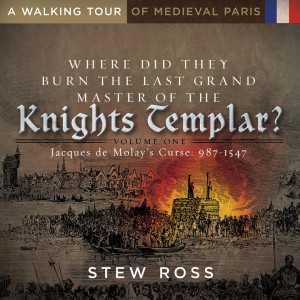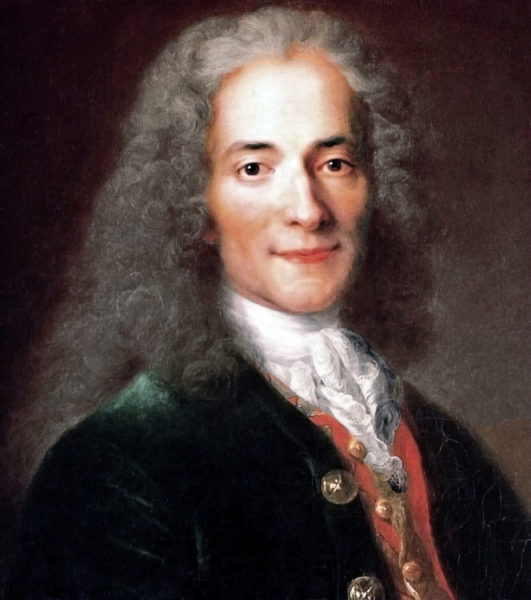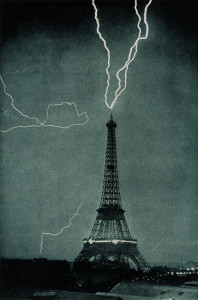I love it when I get feedback from folks who read these blogs (and my books). Thank you for taking the time to write me (yes, I know it’s e-mails but it’s still writing). One of the things I appreciate is constructive feedback. That is one of the best ways for anyone to improve.
Someone’s Reading My Stuff
Christina and her husband live in Australia and recently read one of my books. They are frequent visitors to Paris. She loved the illustrations/images and mentioned how she learned new things about the city from reading the book. It’s that type of feedback which keeps me going.
Fortunately, Christina pointed out an error I made. I referred to Paris as the “City of Lights” when in fact, the proper term is “City of Light.” I greatly appreciated her bringing this to my attention. Not only will we correct that in future editions but also I decided to write this blog on the “City of Light” so as to enlighten all of us.
 In this modern world we live in, all of us take many things for granted. When you wake up in the morning and turn the faucet on, drinkable water comes out (unless you live in Flint, Michigan). When we flip the switch on, the lights come on. Our sewer systems work without filthy discharges. For those of you who read the newest book Where Did They Burn the Last Grand Master of the Knights Templar? A Walking Tour of Medieval Paris, you will learn that one of the toughest tasks during medieval times was merely to survive. Just as an aside, did you know that parts of Paris did not have potable water until the early 1970s?
In this modern world we live in, all of us take many things for granted. When you wake up in the morning and turn the faucet on, drinkable water comes out (unless you live in Flint, Michigan). When we flip the switch on, the lights come on. Our sewer systems work without filthy discharges. For those of you who read the newest book Where Did They Burn the Last Grand Master of the Knights Templar? A Walking Tour of Medieval Paris, you will learn that one of the toughest tasks during medieval times was merely to survive. Just as an aside, did you know that parts of Paris did not have potable water until the early 1970s?
So Why is Paris Know as the City of Light?
The proper name is La Ville-Lumière or more accurately la Ville des Lumières (City of Enlightenment). It really doesn’t have anything to do with the lights of Paris (however, I can certainly understand the confusion). The nickname references the 18th century when France was the center of the Age of Enlightenment. It was a time when the “lights” of science, philosophy, and writing were turned on (so to speak). It had nothing to do with the city’s lights (gas or electric).
The Age of Enlightenment
Between 1715 (the year King Louis IV died) and 1789 (the beginning of the French Revolution), the Siècle des Lumières or Age of Enlightenment grabbed the attention of France and Europe. It was a philosophical movement whose ideas were based on reason (The Age of Reason) as the primary source of authority and legitimacy. Its proponents argued that humans could improve through education and reason. The Age of Enlightenment and Age of Reason provided the backbone for the French Revolutionaries as well as the American revolt against the British (the Declaration of Independence and Constitution incorporated many of the philosophical points from the Enlightenment movement). For France, the king ruled as an absolute monarch with only God as his superior. This was soon to be replaced much to the dismay of King Louis XVI.

The Age of Enlightenment advanced ideas such as liberty, progress, religious tolerance, and constitutional governments. Its spokespeople included Voltaire, Jean-Jacques Rousseau, and Mary Wollstonecraft. Science was not neglected during this period with René Descartes, Isaac Newton, and John Locke providing scientific breakthroughs.
The French motto Liberté, Égalité, Fraternité (liberty, equality, fraternity) has its roots in the Age of Enlightenment.
Brief History of Paris Lights
The mayor of London decreed in 1417 that all houses had to hang lanterns outside during the winter months. More than 100 years later, Paris followed with a similar law for houses that faced the street. Candles placed inside these lanterns illuminated the streets.
1820 Paris began illuminating its streets with gas. Pipes delivered gas to the lanterns which were placed on poles. Lamplighters were responsible for lighting them in the evening and extinguishing the lanterns in the morning. Eventually, someone invented a device that would automatically light the gas when turned on.
1878 The electric arc bulbs began to replace gas in the lanterns.
1881 Approximately 4,000 electric lights had replaced the old gas lanterns.
1890 By now, there were more than 130,000 electric lights on Paris streets.

If you haven’t seen the Eiffel Tower lit up at night, make sure one of your stops in Paris is to see the light show at night. It’s spectacular.
Thanks again to Christine from Australia for enlightening me on the reason we call Paris the “City of Light.”
What’s New With Sandy and Stew?
Roy is in the final stage of finalizing the galley we will submit to our printer (Pollock Printing). This is the first volume of Where Did They Burn the Last Grand Master of the Knights Templar? A Walking Tour of Medieval Paris. We will then begin to put together the electronic version. Volume Two will be published (at this time) only as an electronic version.
Sandy and Stew will be visiting Paris in September 2016 to wrap up our research for the next book, Where Did They Put the Gestapo Headquarters? A Walking Tour of Nazi Occupied Paris (1940–1944). We’re looking forward to seeing our friend, Raphaelle Crevet. She is a talented private guide and I highly recommend her if you are visiting Paris and some of the attractions outside the city (raphaellecrevet@yahoo.fr).
We have a lot of stories and we’re looking forward to sharing these with you. Please continue to visit our blog site and perhaps you’d like to subscribe so that you don’t miss out on our blog posts, past and current.
Share This:
Follow Stew:
Find Stew’s books on Amazon and iBooks.
Please note that we do not and will not take compensation from individuals or companies mentioned or promoted in the blogs.
Walks Through History
Copyright © 2016

